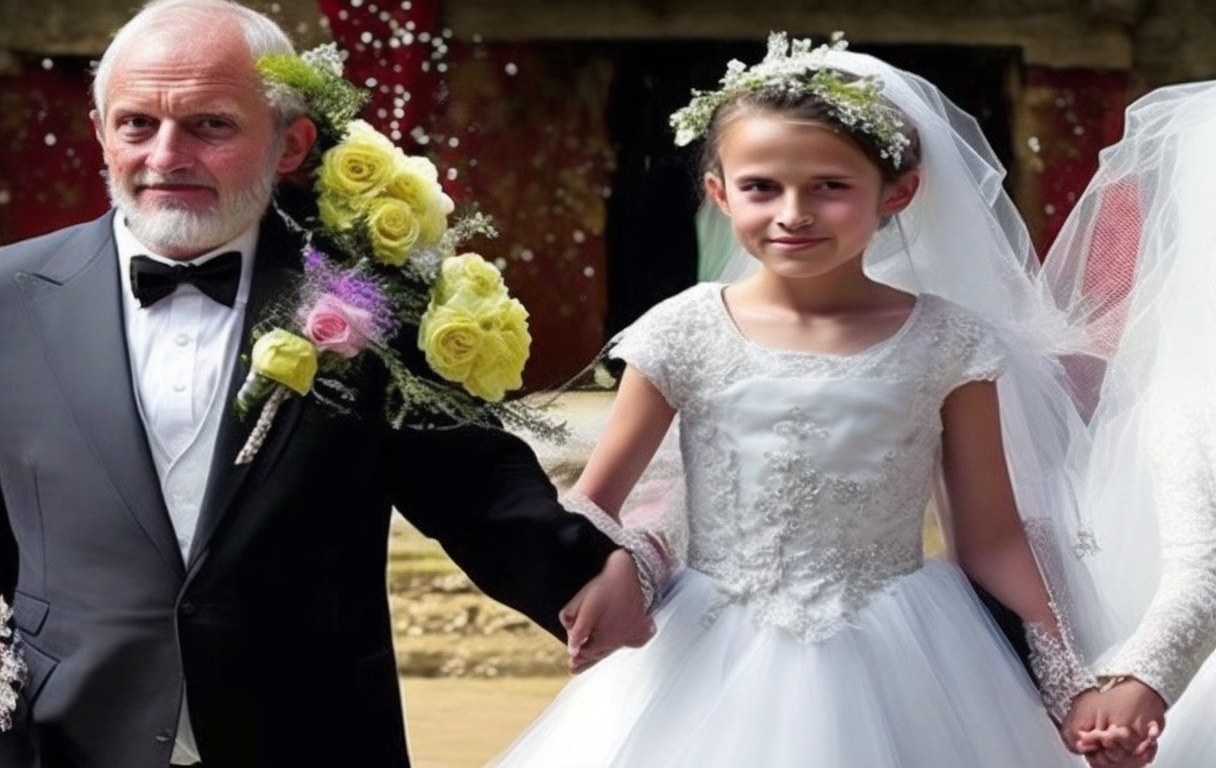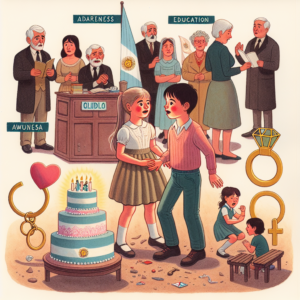Understanding Child Marriage: Causes, Consequences, and Solutions
Introduction:
Child marriage is considered a grave violation of human rights and is recognized globally as a significant social issue. Every year, millions of children, particularly girls, are married off before the age of 18, often against their will. This practice has dire consequences for the victims, their families, and the societies in which they live. In this article, we will delve into the causes of child marriage, explore its consequences, and propose potential solutions to eradicate this harmful practice.
Causes of Child Marriage:
1. Poverty: Poverty plays a crucial role in perpetuating child marriage. Families living in poverty often view marriage as a means to alleviate financial burdens. Moreover, the dowry custom prevalent in many societies can also drive parents to marry off their daughters at a young age.
2. Gender Inequality: Discrimination against girls and women is a significant factor in child marriage. Societies that devalue girls’ education and prioritize their roles as wives and mothers tend to practice child marriage more frequently.
3. Traditional and Cultural Practices: In many cultures, child marriage is deeply entrenched and perceived as a traditional practice. Factors such as preserving family honor, protecting girls from potential harm, and ensuring compatibility between families contribute to its continuation.
4. Lack of Education: Limited access to education, particularly for girls, is a critical cause of child marriage. Lack of education often leads to reduced opportunities for economic and social mobility, making child marriage appear as the only viable option for some families.
Consequences of Child Marriage:
1. Health Risks: Child brides face significant health risks due to early pregnancy and childbirth. Their bodies are not fully developed, which increases the likelihood of complications during pregnancy and childbirth, as well as newborn mortality rates.
2. Education Disruption: Child marriage abruptly ends a girl’s education. Education is crucial for personal development, empowerment, and breaking the cycle of poverty. Denying girls the opportunity to receive an education perpetuates a cycle of illiteracy and limits future opportunities.
3. Psychological Impact: Child marriage subjects young girls to immense psychological trauma. They are forced into adult roles and responsibilities before they have reached emotional maturity, which can have long-lasting psychological consequences.
4. Economic Consequences: The economic consequences of child marriage are substantial. Young girls are often pulled out of school, leading to limited skills and employment opportunities. This perpetuates a cycle of poverty, making it difficult for them to escape their circumstances.
Solutions to Child Marriage:
1. Legislative Measures: Governments should establish strict laws that raise the legal age of marriage to 18 years for both boys and girls. Enforcing these laws and providing penalties for offenders is crucial for combating child marriage.
2. Education and Awareness: Promoting access to quality education for girls is essential to combating child marriage. By investing in girls’ education, societies can empower them with knowledge, skills, and confidence to make informed decisions about their lives.
3. Economic Empowerment: Creating economic opportunities for women and girls can serve as a deterrent to early marriage. Vocational training programs, microfinance initiatives, and entrepreneurship support can provide girls with the tools necessary to become economically independent.
4. Changing Social Norms: Engaging communities, religious leaders, and influencers in advocating for change can help challenge deep-rooted social norms that perpetuate child marriage. Education campaigns and community discussions can create awareness and foster a critical dialogue about the negative impacts of child marriage.
FAQs:
Q: Is child marriage prevalent only in developing countries?
A: No, child marriage occurs across different regions and cultures, including developed countries. However, it is more prevalent in developing nations, where poverty and gender inequality often persist.
Q: What is the legal age of marriage in most countries?
A: The legal age of marriage varies between countries. While most nations have set the minimum age at 18 years, some countries allow exceptions for marriage below this age with parental or court consent.
Q: How can I contribute to ending child marriage?
A: There are several ways to contribute, including supporting organizations that work towards ending child marriage, advocating for change within your community, and raising awareness about the issue through social media and other platforms.
Q: What are the long-term consequences of child marriage?
A: Child marriage perpetuates cycles of poverty, limits educational opportunities, increases health risks for girls and their children, and perpetuates gender inequality. It also hampers social and economic development at both individual and societal levels.
Conclusion:
Child marriage remains a significant challenge worldwide, but it is not an insurmountable problem. By understanding its causes, consequences, and potential solutions, we can work towards eradicating this harmful practice. By empowering girls through education, economic opportunities, and legal protection, we can pave the way for a brighter future, where child marriage will be a thing of the past. Together, we can ensure that every child has the right to a safe and empowered childhood.





















